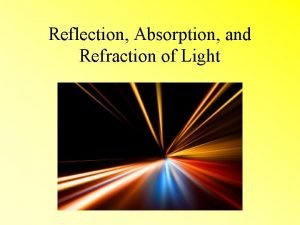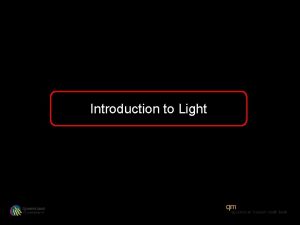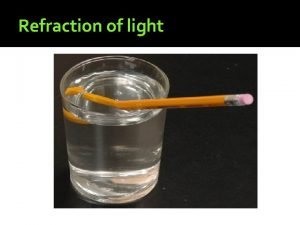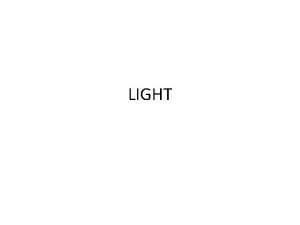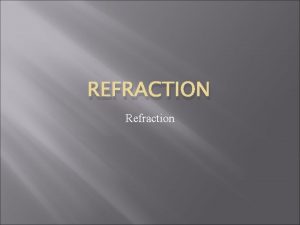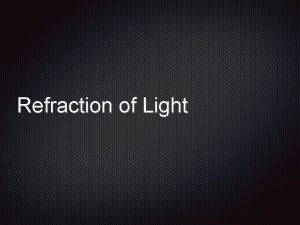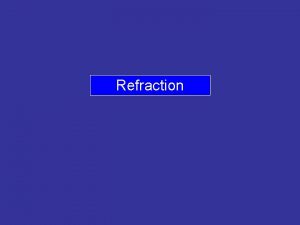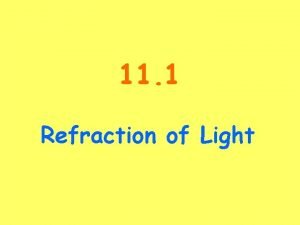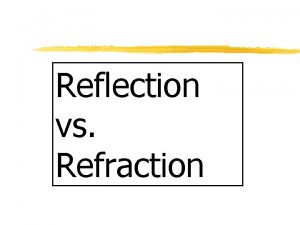Lecture on Speed of Light and Refraction Speed






- Slides: 6

Lecture on Speed of Light and Refraction

Speed of Light & Refraction As you have already learned, light is extremely fast, about 3 108 m/s in a vacuum. Light, however, is slowed down by the presence of matter. The extent to which this occurs depends on what the light is traveling through. Light travels at about 3/4 of its vacuum speed (0. 75 c ) in water and about 2/3 its vacuum speed (0. 67 c ) in glass. The reason for this slowing is because when light strikes an atom it must interact with its electron cloud. If light travels from one medium to another, and if the speeds in these media differ, then light is subject to refraction (a changing of direction at the interface). Refraction of light waves Refraction of light rays

Reflection & Refraction At an interface between two media, both reflection and refraction can occur. The angles of incidence, reflection, and refraction are all measured with respect to the normal. The angles of incidence and reflection are always the same. If light speeds up upon entering a new medium, the angle of refraction, r , will be greater than the angle of incidence, as depicted on the left. If the light slows down in the new medium, r will be less than the angle of incidence, as shown on the right. y a Inc R d ide e t nt R c e l f ay ay e R e fl e R ay d. R r cte fra Re normal r Re fract ed R ay d e t c y a R

Axle Analogy Imagine you’re on a skateboard heading from the sidewalk toward some grass at an angle. Your front axle is depicted before and after entering the grass. Your right contacts the grass first and slows, but your left wheel is still moving quickly on the sidewalk. This causes a turn toward the normal. If you skated from grass to sidewalk, the same path would be followed. In this case your right wheel would reach the sidewalk first and speed up, but your left wheel would still be moving more slowly. The result this time would be turning away from the normal. overhead view sidewalk grass r

Skating from sidewalk to grass is like light traveling from air to a more “optically dense” medium like glass or water. The slower light travels in the new medium, the more it bends toward the normal. Light traveling from water to air speeds up and bends away from the normal. As with a skateboard, light traveling along the normal will change speed but not direction.

Index of Refraction, n The index of refraction of a substance is the ratio of the speed in light in a vacuum to the speed of light in that substance: c n= v n = Index of Refraction c = Speed of light in vacuum v = Speed of light in medium Note that a large index of refraction corresponds to a relatively slow light speed in that medium. Medium n Vacuum 1 Air (STP) 1. 00029 Water (20º C) 1. 33 Ethanol 1. 36 Glass ~1. 5 Diamond 2. 42
